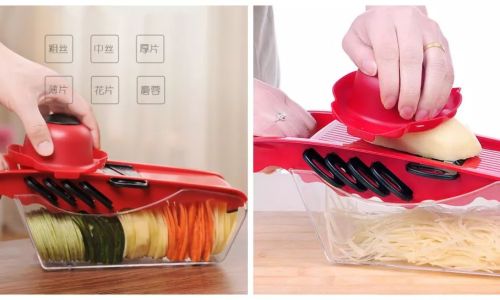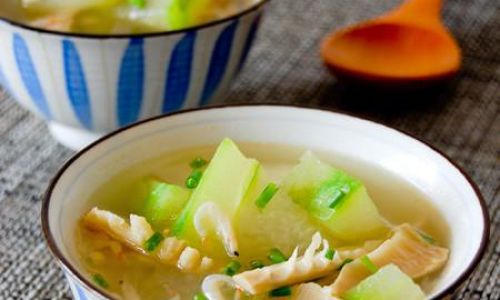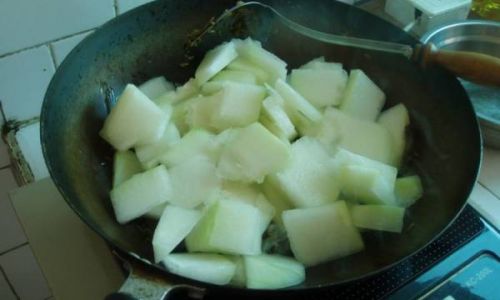Table of content
- 1 Knife Safety
- 2 Handling Heat
- 3 Cross-Contamination Prevention
- 4 Kitchen Organization
- 1 Knives
- 2 Pots and Pans
- 3 Utensils
- 4 Measuring Tools
- 1 Boiling and Simmering
- 2 Sautéing and Stir-Frying
- 3 Roasting and Baking
- 4 Grilling and Broiling
- 5 Steaming
- 1 Perfect Scrambled Eggs
- 2 One-Pot Pasta Primavera
- 3 Crispy Oven-Baked Chicken Thighs
- 4 Fluffy Pancakes
- 1 Weekly Meal Planning
- 2 Batch Cooking
- 3 Freezer-Friendly Staples
- 1 Overcooked Meat
- 2 Soggy Vegetables
- 3 Lumpy Sauce
- 4 Burnt Food
- 1 Salt
- 2 Acidity
- 3 Herbs and Spices
- 4 Umami
Introduction
Embarking on a culinary journey as a kitchen novice can feel daunting, but mastering foundational skills is the key to unlocking confidence and creativity in the kitchen. Whether you’re cooking for yourself, family, or friends, understanding basic techniques, tools, and recipes transforms meal preparation from a chore into an enjoyable art form. This article guides beginners through must-know kitchen essentials, from safety protocols to foolproof recipes, ensuring every novice cook builds a strong foundation for culinary success.
Kitchen Safety and Organization
Safety is paramount in any kitchen. Before diving into recipes, familiarize yourself with these critical practices:

1 Knife Safety
A sharp knife is safer than a dull one, as it requires less force to cut. Always:
- Hold the knife correctly: Grip the handle firmly with your dominant hand, anchoring your thumb and index finger on the blade’s base (the “pinch grip”).
- Curl fingers inward: When chopping, tuck your fingertips under your knuckles to prevent accidental cuts. This “claw grip” protects your hands.
- Use a stable cutting board: Place a damp towel or non-slip mat underneath to prevent slipping.
2 Handling Heat
Ovens, stovetops, and hot pans demand respect:
- Use oven mitts: Always wear heat-resistant gloves when handling hot dishes or baking trays.
- Avoid loose clothing: Tie back hair and roll up sleeves to prevent fabric from catching fire.
- Test oil temperature: To check if oil is hot enough for frying, drop a small piece of food (like a breadcrumb) into the pan—it should sizzle gently but not smoke.
3 Cross-Contamination Prevention
Bacteria thrive in raw meat, seafood, and eggs. To avoid foodborne illnesses:
- Use separate cutting boards: Designate one for produce and another for raw proteins.
- Wash hands frequently: Scrub with soap for 20 seconds before and after handling raw ingredients.
- Store food properly: Keep raw meats on the lowest shelf of the refrigerator to prevent drips onto other foods.
4 Kitchen Organization
A clutter-free workspace enhances efficiency:

- Group ingredients by recipe: Pre-measure and arrange components in bowls or containers (mise en place).
- Clean as you go: Wipe spills immediately and wash utensils to avoid a chaotic post-cooking cleanup.
- Label leftovers: Use masking tape to date and name containers, ensuring nothing goes to waste.
Essential Tools and Equipment
You don’t need a fully stocked professional kitchen to cook well. Focus on these versatile tools:
1 Knives
- Chef’s knife (8-inch): The workhorse for chopping, slicing, and dicing.
- Paring knife (3-4 inch): Ideal for peeling fruits or trimming vegetables.
- Serrated knife: Perfect for slicing bread or tomatoes without crushing them.
Pro Tip: Invest in quality knives and have them professionally sharpened annually.
2 Pots and Pans
- Stainless steel skillet: Retains heat well and is oven-safe.
- Non-stick pan: Essential for delicate foods like eggs or pancakes.
- Dutch oven: A heavy pot for slow-cooking stews, soups, or bread.
3 Utensils
- Tongs: For flipping meat or tossing salads.
- Wooden spoon: Gentle on non-stick surfaces.
- Silicone spatula: Scrapes bowls clean and resists heat.
4 Measuring Tools
- Dry measuring cups: For flour, sugar, or rice.
- Liquid measuring cup: With a spout for accurate pouring.
- Kitchen scale: Critical for baking precision.
Avoid Gadget Overload: Resist buying single-use tools (e.g., avocado slicers). A sharp knife and spoon can handle most tasks.
Basic Cooking Techniques
Master these methods to elevate your dishes:

1 Boiling and Simmering
- Boiling: Use for pasta, potatoes, or blanching vegetables. Bring water to a rolling boil (212°F/100°C) before adding ingredients.
- Simmering: Maintain a gentle bubble (180-195°F/82-90°C) for sauces, soups, or poaching eggs.
2 Sautéing and Stir-Frying
- Sautéing: Cook small, uniform pieces of food in a hot pan with oil. Shake the pan to toss ingredients evenly.
- Stir-frying: Use high heat and quick movements to cook vegetables or meat rapidly. Have all ingredients prepped before starting.
3 Roasting and Baking
- Roasting: Enhances flavors through dry heat. Toss vegetables or meat with oil, salt, and herbs before roasting at 375-425°F (190-220°C).
- Baking: Ideal for breads, cakes, or casseroles. Preheat the oven and use a rack in the center for even heat distribution.
4 Grilling and Broiling
- Grilling: Cook over direct heat for charred marks (e.g., burgers, vegetables).
- Broiling: Use the oven’s top heat element to melt cheese or caramelize toppings.
5 Steaming
A gentle method that preserves nutrients. Use a steamer basket or colander over boiling water.
Foundation Recipes for Beginners
Start with these simple, adaptable dishes to build confidence:
1 Perfect Scrambled Eggs
- Ingredients: 4 eggs, 1 tbsp butter, salt, pepper.
- Method:
- Whisk eggs with a pinch of salt.
- Melt butter in a non-stick pan over low heat.
- Pour in eggs, stirring slowly with a spatula until curds form.
- Remove from heat while still slightly runny (they’ll continue cooking).
Variations: Add cheese, herbs, or diced vegetables.
2 One-Pot Pasta Primavera
- Ingredients: 8 oz pasta, 2 cups cherry tomatoes, 1 zucchini, 1 cup broth, olive oil, garlic.
- Method:
- Sauté garlic in oil. Add vegetables and broth.
- Add pasta and simmer until al dente.
- Toss with Parmesan and basil.
3 Crispy Oven-Baked Chicken Thighs
- Ingredients: 4 chicken thighs, 2 tbsp oil, salt, pepper, paprika.
- Method:
- Pat chicken dry. Rub with oil and seasonings.
- Bake at 400°F (200°C) for 35-40 minutes until golden.
4 Fluffy Pancakes
- Ingredients: 1 cup flour, 1 tbsp sugar, 1 tsp baking powder, 1 egg, 1 cup milk.
- Method:
- Whisk dry ingredients. Add egg and milk.
- Cook on a greased griddle until bubbles form. Flip.
Meal Prep and Planning
Efficient meal prep saves time and reduces stress:

1 Weekly Meal Planning
- Theme nights: Assign categories (e.g., “Meatless Monday,” “Taco Tuesday”).
- Check inventory: Use up perishables first.
2 Batch Cooking
- Roast a tray of vegetables or cook a large pot of grains to repurpose in multiple meals.
3 Freezer-Friendly Staples
- Portion soups, sauces, or cooked proteins into freezer bags for quick dinners.
Sample Meal Plan:
- Breakfast: Overnight oats with fruit.
- Lunch: Quinoa salad with roasted veggies.
- Dinner: Lemon garlic shrimp with steamed broccoli.
Troubleshooting Common Mistakes
Even seasoned cooks err. Here’s how to fix blunders:
1 Overcooked Meat
- Solution: Slice thinly and serve in tacos or sandwiches. The added toppings mask dryness.
2 Soggy Vegetables
- Solution: Roast at high heat to evaporate moisture. Toss with a crisp texture (e.g., toasted almonds).
3 Lumpy Sauce
- Solution: Use a whisk or blender to smooth out lumps.
4 Burnt Food
- Solution: Scrape off the burnt layer gently. Transfer the rest to a new pan and add acidity (lemon juice) to mask bitterness.
Building Flavor Profiles
Understanding seasoning elevates dishes from bland to bold:
1 Salt
- Add in layers: Season raw ingredients, taste during cooking, and adjust before serving.
2 Acidity
- Balance richness with lemon juice, vinegar, or yogurt.
3 Herbs and Spices
- Fresh vs. dried: Use 1 tbsp fresh herbs per 1 tsp dried. Toast spices in a dry pan to release aromas.
4 Umami
- Incorporate ingredients like Parmesan, mushrooms, or soy sauce for depth.
Expanding Your Repertoire
Once comfortable with basics, experiment with global cuisines:

- Italian: Master pasta shapes and tomato sauces.
- Mexican: Learn salsa ratios and taco seasonings.
- Asian: Invest in a wok and practice stir-fry techniques.
Pro Tip: Follow authenticity sparingly. Use recipes as guidelines, not rules.
Conclusion
Cooking is a lifelong skill that rewards patience and practice. Start by mastering safety, tools, and foundational recipes. Embrace mistakes as learning opportunities, and don’t shy away from experimenting. Over time, you’ll develop intuition for flavor combinations and technique nuances. Whether you’re feeding one or ten, the joy of creating a delicious meal from scratch is unmatched. So, tie on that apron, sharpen your knife, and let the kitchen become your canvas. Bon appétit!





0 comments